| |
|

Friday, July 11 Congregation Beth El Kabbalat Shabbat Services


FRIDAY, JULY 18 Temple Solel Shabbat at Beach


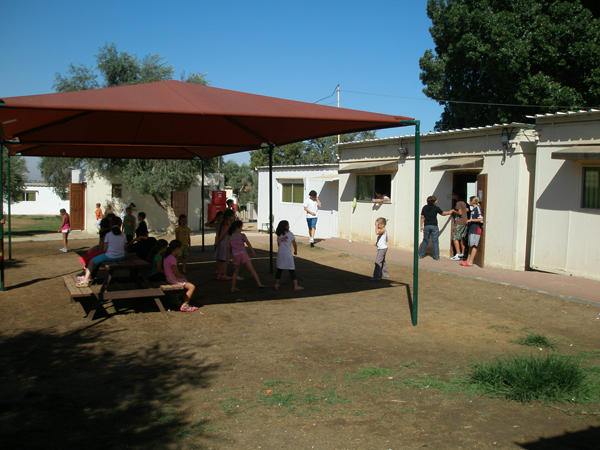
FROM THE GATES OF THE NEGEV
How Sha'ar Hanegev elementary school protects Israeli kids from the rockets
By Ulla Hadar
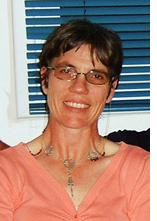 KIBBUTZ RUHAMA, Israel—While the municipality of Sha’ar Hanegev rebuilds its elementary school to make it more rocket-resistant, students from the area’s 10 kibbutzim and one moshav are being educated in approximately two dozen mobile-home-like caravans on this kibbutz, which is the farthest in the municipality from the Gaza border. KIBBUTZ RUHAMA, Israel—While the municipality of Sha’ar Hanegev rebuilds its elementary school to make it more rocket-resistant, students from the area’s 10 kibbutzim and one moshav are being educated in approximately two dozen mobile-home-like caravans on this kibbutz, which is the farthest in the municipality from the Gaza border.
Anat Regev, headmaster for 14 years of the elementary school, says reconstruction of the old facility—located just across the street from the city limit of Sderot—should be completed by this coming Chunukah.
Some of the classrooms at the old elementary school already were rocket-resistant, and these have been appropriated for use by junior high school and high school students at the educational complex, she said. There are not enough safe rooms to accommodate all the students, however, forcing the school to implement double sessions.
Kindergarteners are educated on their kibbutzim, and first through sixth graders at the elementary school at Kibbutz Ruhama. Older students are still at the old educational complex. As we sat in the community building of Kibutz Ruhama, Regev told me that the fate of the elementary school and of the Sha’ar Hanegev region are interdependent.
 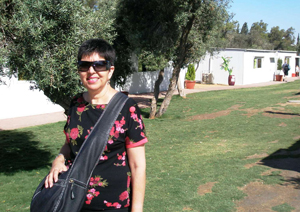
The ability of the school to continue to educate students even under adverse circumstances has become a symbol of the entire community’s endurance in the face of rocket attacks from Hamas, which, though halted by a recent ceasefire, could resume at any time.
The elementary school had to be extremely flexible to provide stability, Regev mused. It had to be torn down in order to be rebuilt. It had to go into exile to have a permanent home.
“The school is trying not only to survive but to strive for growth and renewal,” she said. “We want to help strengthen the parents so that they will feel safe returning their children to study in a threatened area, and we want to support the staff.”
Three years ago at the old facility, there were 720 pupils. This year there were 560, and next September that number will further decrease to 490, Regev said. “This will have an effect on the number of classes and also decrease the number of teachers,” she said. “Currently we have 50 full time teachers and 20 part-timers.”
Regev said for some children it is difficult to adjust to the idea that favorite teachers may not be able to return when classes resume in September. The teachers meanwhile face difficult decisions.
For instance, she said, take a young teacher who lives in one of the communities bordering Gaza. She has to cope with the tension at home with her own family, then go to work, be supportive to her pupils, and at the same time, be stressed about whether or not she will have a job next September.
“It leaves her affected psychologically,” Regev said. “We try to provide psychological assistance to our staff but it is not enough. The strengthening of our staff is a crucial issue and I have asked Yuli Tamir, the Minister of Education, to help us reinforce the morale of our staff. This is the basis for the strength of our children and therefore for the whole area of Sha’ar Hanegev.
On the positive side, said Regev, the children showed a marked improvement in study habits and behavior after they were transferred to the quiet of this kibbutz, where they could spend the 8 a.m- 4 p.m. school day in a quiet environment without “red alerts” warning of incoming Kassams.
“The location in Kibbutz Ruhama has enabled us to do things with the children that we have not been able to do for more than three years—things like nature trips, playing on the soccer field or just being outside of the buildings and enjoying a quiet and serene atmosphere.
“It has given us the possibility of teaching in a more relaxed matter,” she continued. Because there are no “red alert” sirens, “children don’t have to scramble underneath school tables.
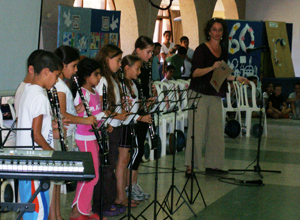 ”It was difficult at first to provide the children with space for extra-curricular activities like computer rooms, but we were able to solve that with a mobile computer truck arriving at the school. We’ve also maximized the use of buildings of Kibbutz Ruhama. For example, half of the dining hall is now used for sports activities and performances. When we had a memorial ceremony for our soldiers, it was done at the outdoors Yad Lebanim Memorial on the kibbutz.” ”It was difficult at first to provide the children with space for extra-curricular activities like computer rooms, but we were able to solve that with a mobile computer truck arriving at the school. We’ve also maximized the use of buildings of Kibbutz Ruhama. For example, half of the dining hall is now used for sports activities and performances. When we had a memorial ceremony for our soldiers, it was done at the outdoors Yad Lebanim Memorial on the kibbutz.”
Prior to moving, school officials did not dare to take the students more than 15 seconds away from safe rooms—as that was all the time students had to take
cover against incoming Kassams. Beyond the range of the Kassams at Kibbutz Ruhama, “we were able to do a ceremony outside with all the children and staff in a serene, quiet and proper atmosphere.”
Ruhama’s location as Sha’ar Hanegev’s easternmost kibbutz has increased the cost of transporting students from their homes to the school by 100,000 shekels every month. This is covered jointly by the Sha’ar Hanegev municipality and Israel’s Ministry of Education. Parents have not had to bear any of the additional costs.
Various outside organizations including the American Jewish Joint Distribution Committee, the United Jewish Appeal, and the United Jewish Federation of San Diego have contributed funds for a variety of purposes such as enrichment courses, field trips, and music.
“We are also trying to have major ‘happenings’ where the children, the teachers and their parents are all included,” Regev said. “The bonding provided at these events—of children-teachers and parents—are very essential, powerful and promote the strengthening of these relationships.”
The Women’s International Zionist Organization (WIZO) has offered teachers and their families a three-day vacation at its boarding school, with various activities included. WIZO also has offered to help upgrade the teacher’s staff room and to improve the teacher’s working conditions, Regev said.
MONDAY, SEPT. 29-THURSDAY, OCT. 9


LETTER FROM JERUSALEM
Possible attack on Iran, negotiating for hostages prompt many ethical questions
By Ira Sharkansky
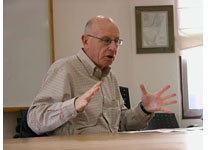 JERUSALEM—For those who perceive that it is not easy being an Israeli citizen, consider the plight of Israeli pollicymakers. They are among the citizens, with spouses, children and grandchildren exposed to the problems of living on the edge. And they have the tasks of making decisions that may push the country closer to the edge, or over it. JERUSALEM—For those who perceive that it is not easy being an Israeli citizen, consider the plight of Israeli pollicymakers. They are among the citizens, with spouses, children and grandchildren exposed to the problems of living on the edge. And they have the tasks of making decisions that may push the country closer to the edge, or over it.
Some time ago, Varda and I were visiting American friends. Our hostess and another friend spent considerable time arguing the aesthetics of competing salt and pepper shakers.
 Often we remind ourselves of that when we tire of our problems. Often we remind ourselves of that when we tire of our problems.
News of an airforce exercise seemingly meant as practice for attacking Iran has stirred international concern to the point of increasing the price of oil, and dropping the indices at major stock exchanges.
Does Israel have a right to disturb the world in this fashion? Further, does it have a right to actually carry out such an attack, with its implications beyond the price of oil and our favorite stocks?
The answers depend on one's view of the threats against Israel issued repeatedly by Iran's president, and the measured way (some would say the lethargic way) in which the International Atomic Energy Agency and the great powers are trying to convince Iran to desist from its nuclear program.
If actions that may affect many millions of people in numerous countries are too big to ponder, there are competing issues, no less sensitive, that concern only three Israelis. Gilad Shalit is a soldier held prisoner in Gaza for two years. His captors have not allowed visits by international organizations, but there is a high probability that he is alive. Ehud Goldwasser and Eldad Regev were captured in an incident that provoked the 2006 war in Lebanon. Their captors have not allowed visits by international organizations or confirmed their well being. It is widely thought that they died of wounds suffered during their capture, or since then.
All three soldiers, their families, and ranking policymakers are currently in the headlines, competing for attention with the prospect of attacking Iran.
The parents of Shalit have initiated a suit in the Supreme Court against the possibility that Israel will allow the opening of Gaza's borders without obtaining their son's release. They assert that the decision to go ahead with a cease fire not tied to the soldier's release violates a government decision that his release would be part of any agreement with Hamas.
Is this asking a judicial body to interfere in decisions properly reserved to political entities? Is the action fair within the primary concern of a family to look after itself, no matter what the implications for the public? Should the fate of one soldier endanger a cease fire with implications for thousands of Israelis living within rocket range of Gaza?
Some Israelis are willing to pay the price for Shalit demanded by Hamas: the release of 450 prisoners, including many who would add to Hamas' arsenal of committed fighters.
Others are saying the price is too high, and will encourage Palestinian extremists. Better to delay the return of one Israeli soldier, even if it endangers his life.
The case of Goldwasser and Regev is no less vexing. Hizbollah demands the return of a Lebanese kept in Israeli prison due to an especially gruesome killing of civilians in 1979, as well as several Lebanese fighters captured in 2006, and the bodies of several other fighters.
The mother of Ehud Goldwasser is sure that he is alive. She demands that the government pay the price of his return. Goldwasser's wife, Karnit, married shortly before his capture, has become a prominent and attractive media figure since his capture. She has appeared in Israeli and overseas settings demanding information about his condition and his release, all the while earning a engineering masters degree with honors at the Technion. She is an impressive woman, and arguably the key figure in the drama. Without proof that her husband is dead that will satisfy the Rabbinate, she must live in the limbo of an agunah, a woman who may be a widow but cannot remarry.
Few Israelis object to trading dead bodies for dead bodies. Many are willing to pay the price demanded for Goldwasser and Regev if the soldiers are alive, or if it will release Karnit Goldwasser from her difficult status. Some members of the government are not willing to go ahead with the agreement without confirmation of the soldiers' well-being. All signs are that Hizbollah is not willing to provide that information without the return of the Lebanese held by Israel.
Army policy is to thwart the capture of its soldiers. This is part of a larger policy that soldiers are trained to fight aggressively in order to achieve their objectives, and to avoid the protracted and difficult problems of having to free captives. Like other things that the army does, it involves teaching nice Jewish children to do ugly things.
It is not army policy to kill its own soldiers who have been captured. It is my understanding of army policy, however, to direct deadly fire at any group of enemy fighters that may be in the process of capturing an Israeli.
It is easier to argue about salt and pepper shakers.


THE VIEW FROM JINSA
Israel is now appeasing its Arab enemies
By Shoshana Bryen
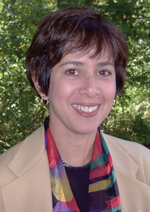 WASHINGTON, D.C.—The Government of Israel is busy: suggesting negotiations over Shebaa Farms with Beirut's new Hezbollah-dominated government; using a German mediator to release to Hezbollah a terrorist who killed an Israeli child by smashing her head with a rifle butt; using a Turkish mediator to offer Syria the Golan Heights; and using Egypt to establish a cease-fire with Hamas that allows the terrorist group to hang on to Gilad Shalit and reasonably claim a victory for violent revolution.* WASHINGTON, D.C.—The Government of Israel is busy: suggesting negotiations over Shebaa Farms with Beirut's new Hezbollah-dominated government; using a German mediator to release to Hezbollah a terrorist who killed an Israeli child by smashing her head with a rifle butt; using a Turkish mediator to offer Syria the Golan Heights; and using Egypt to establish a cease-fire with Hamas that allows the terrorist group to hang on to Gilad Shalit and reasonably claim a victory for violent revolution.*
This diplomatic push appears to be an effort to buy a period of calm, rather than a belief that Israel will realize its strategic goals from the negotiations or the concessions. This leads to two questions: what are Israel's strategic goals, and of what benefit is a defined period of limited calm (other than that it beats living under fire day-to-day)?
Israel's strategic goals have has been political legitimacy and, "Termination of all claims or states of belligerency... [and the] right to live in peace within secure and recognized boundaries free from threats or acts of force" - the promises of UN Resolution 242. The corollaries are that Israel cannot fight a war of attrition against larger and less politically sensitive hostile forces, and wars have to be fought on enemy territory.
A period of calm, purchased by ceding to the enemy what it currently demands while knowing that later demands are likely is known as appeasement. Although inextricably tied to Munich, Hitler and Chamberlain's umbrella, appeasement is not always wrong. Carefully calculated, it might be useful if a country isn't ready to fight now, but will be later. Serious students of WWII acknowledge that Britain was in no position to go to war in 1938, having failed to squash Hitler in 1936 when it would have been easier. Hitler had used the interregnum to his advantage and Britain had to catch up.
If Israel decides it is not now in a position to fight Hezbollah or Hamas, keeping them quiet may work, as long as the government correctly calculates the enemy's increased ability and readiness to fight next time and uses the time wisely itself. Certainly Hamas and Hezbollah will be using it to their advantage. Or, if Israel has decided that Iran requires a concentrated effort, throwing bones to the local warlords may provide the requisite time and space to tackle the most pressing strategic problem.
This assumes, of course, that the Government of Israel has made a calculated choice for calculated gain and isn't swallowing its own peace propaganda.
On the other hand, there appears to be no rational calculation for Secretary Rice's current obsession with giving away bits of Israel to its enemies. The housing freeze she seeks on the West Bank and in Israel's capital seem primarily designed to ensure that if the Palestinians ever agree to take the state they have been rejecting since 1947, there won't be too many Jews there. Appeasement, in that case, is tantamount to surrender.
*An Iranian Foreign Ministry spokesman called the cease-fire the result of "the persistence and the resistance of the Palestinian nation and the determination of the brave people of the Hamas movement and other Palestinian organizations against the aggressions of the Zionist occupying forces." He's probably not the only one who thinks so.

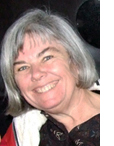 Nancy Harrison Nancy Harrison
cruise & tour specialist
(619) 265-0808

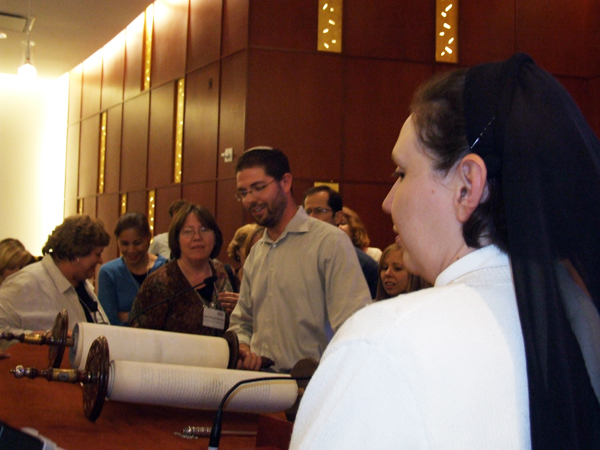
THE JEWISH CITIZEN
Jewish-Catholic dialogue focuses on
the crucifixion and on the Holocaust
By Donald H. Harrison
 CARDIFF BY THE SEA, California—Approximately 50 Catholic educators took a three-day detour on the way to their summer vacations: they attended an intensive conference sponsored by the Anti-Defamation League on Catholic-Jewish relations. CARDIFF BY THE SEA, California—Approximately 50 Catholic educators took a three-day detour on the way to their summer vacations: they attended an intensive conference sponsored by the Anti-Defamation League on Catholic-Jewish relations.
During the concluding session held Wednesday, June 18, at Temple Solel in this seacoast town (now incorporated into the City of Encinitas), organizers and attendees provided some reflections to San Diego Jewish World on how the “Bearing Witness” program impacted them.
The greater part of the first two days of the conference featured a series of structured discussions to probe the Catholic and the Jewish viewpoints. Day one was held at Congregation Beth Israel in La Jolla (a seaside town now incorporated into the City of San Diego) and day two at Cathedral Catholic High School in the Carmel Valley neighborhood of San Diego. The third day focused on the Holocaust, with Survivors joining the participants for the conferences concluding dinner.
In the theological dialogue, Catholics were spoken for by Father Dennis McManus, former associate director of the Secretariat for the Liturgy of the United States Conference of Catholic Bishops and current associate professor of theology at Georgetown University. Jews were spoken for by Conservative Rabbi Elliot N. Dorff, rector and philosophy professor at the American Jewish University (known formerly as the University of Judaism) in Los Angeles.
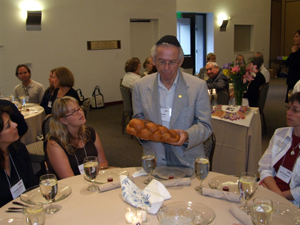 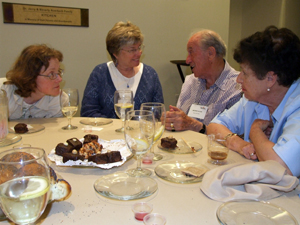
Thérèse Carmona, who teaches religion at Cathedral Catholic High School, said while she has taught the Nostra Aetate (Our World) statement on Catholic-Jewish relations fashioned at the Second Vatican Council and promulgated by Pope Paul VI in 1965, she was surprised that “even among my own colleagues and my own fellow teachers there are still these misunderstandings and misconceptions about Judaism, and carryovers of myths and anti-Semitism. To me this was kind of an eye opener. I made assumptions that this was no longer an issue.”
Wikipedia translates a key portion of Nostra Aetate as follows: “May all, then, see to it that in their catechetical work or in their preaching of the word of God they do not teach anything that could give rise to hatred or contempt of Jews in the hearts of Christians. May they never present the Jewish people as one rejected, cursed, or guilty of deicide. All that happened to Christ in His passion cannot be attributed to the whole people then alive, much less to that of today. Besides, the Church has always held and holds now that Christ underwent His passion and death freely, because of the sins of all people and out of infinite love. Therefore, Christian preaching is to proclaim the Cross of Christ as a sign of God's all-embracing love and as the fountain from which every grace flows.”
However, commented Carmona, “there still are people who believe—and this was a surprise to me—that the Jews killed Jesus.”
Sister Annalisa Burgos, a teacher at Vincent Memorial Catholic High School in Calexico, said the program addressed myths—for example, the one that Jews killed Christ. These are things that people still believe today, and we are responsible to go back to our schools and teach the truth.”
Burgos, a Sister Servant of the Blessed Sacrament, completed her first year of teaching high school earlier this month. “I think our students need to know that the Jewish people were blamed for something that was false, and instead of correcting it in the beginning, it just developed into something and was misinterpreted even more, and blown out of proportion… We need to address that in the classroom so our students can go out and correct misinformation on the outside.”
Asked to describe her order, the nun said it is a teaching order originally founded in Mexico. “We believe that Jesus is really present in the consecrated host {bread eaten by believing Catholics during the Eucharist ceremony} and so we dedicate one hour of prayer before Jesus and the Blessed Sacrament.”
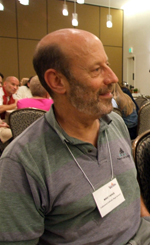 Another area of discussion between McManus and Dorff dealt with the interrelatedness of Hebrew and Christian scriptures. Mike Fares, who teaches English and journalism at Cathedral Catholic High School, said the conference brought home to him the idea that many of the gospels were intended to be read by Jewish audiences and that some of the references cannot be understood unless one understands their Jewish context. Another area of discussion between McManus and Dorff dealt with the interrelatedness of Hebrew and Christian scriptures. Mike Fares, who teaches English and journalism at Cathedral Catholic High School, said the conference brought home to him the idea that many of the gospels were intended to be read by Jewish audiences and that some of the references cannot be understood unless one understands their Jewish context.
For example, he said, in the Gospel of St. Mark, there is a story (5:25-34) about a woman who had been continuously menstruating for twelve years and was cured after touching Jesus’ garment.
He said Rabbi Dorff explained that as a woman who was menstruating, she was considered ritually impure in Orthodox Jewish tradition, someone who should avoid contact with people. Yet she touched Jesus’ garment, which Dorff
suggested was a tallit. If she had thought Jesus an ordinary mortal, she would not have dared violated the ban against contact. Thus, the context in which Jesus tells her (Mark 5:34, King James Bible), “Daughter, they fith hath made thee whole; go in peace, and be whole of thy plague.”
Said Fares, “It was an incident that if I had heard it before I would have said it was about having faith, but when it was read with the rabbi there, and with the priest talking, I got a whole new perspective what it was about.”
The theological dialogue between McManus and Dorff also touched on the Epistle of St. Paul to the Romans (11:16-18) in which Paul told the Gentiles: “For if the firstfruit be holy, the lump is also holy, and if the root be holy, so are the branches. And if some of the branches be broken off, and thou, being a wild olive tree, wert graffed in among them, and with them partakest of the root and fatness of the olive tree; Boast not against the branches. But if thou boast, thous bearest not the root, but the root thee…”
Commented Fares: “The realization came to me that we (Catholics) were the graft… What I saw were lots of people who realized that we should not proselytize to the Jewish people, as some want to. We should preserve and protect them as if they are of our own. They are of the same tree.”
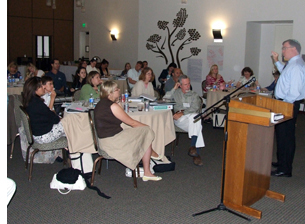 The third day turned to such issues as anti-Semitism and the Holocaust. Among the speakers was Rick Barton (photo at right), an attorney who had served as chairman of the San Diego Regional Chapter of the ADL and today chairs ADL’s national committee on leadership development. His wife, Elaine Feuer-Barton, chairs the education committee of the regional ADL, which was instrumental in staging the conference. The third day turned to such issues as anti-Semitism and the Holocaust. Among the speakers was Rick Barton (photo at right), an attorney who had served as chairman of the San Diego Regional Chapter of the ADL and today chairs ADL’s national committee on leadership development. His wife, Elaine Feuer-Barton, chairs the education committee of the regional ADL, which was instrumental in staging the conference.
The focus of the third day is “to enable and empower these educators to teach about the Holocaust and anti-Semitism in a responsible, educated way with a deeper understanding of these issues,” Rick Barton said.
In some cases, participants had “no idea that there is anti-Semitism in the United States,” Barton added. “They think it is something from a bygone era, that Jews are so successful, etcetera. And they have no idea of the extent of anti-Semitism that exists in the Arab world. When they see the cartoons that exist in the Arab world in the press every single day, that is an eye opener for them. European anti-Semitism: they have no grasp of the fact that the Jews in Europe do not have the same access, the same openness, the same comfort level that the Jews here in the United States have.”
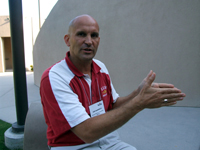 Don DeAngelo (pictured at left), a U.S. history teacher at Cathedral Catholic High School, has attended five of the conferences and participates in the ongoing work of the Bearing Witness planning committee. Don DeAngelo (pictured at left), a U.S. history teacher at Cathedral Catholic High School, has attended five of the conferences and participates in the ongoing work of the Bearing Witness planning committee.
Even though Nostra Aetate repudiates the notion that Jews were responsible for the killing of Jesus, said DeAngelo, “you get here and you find out that indeed it was official theology for a long time before that. What you get confronted with is the notion that I have to take ownership of the past from my own group. … I think we like to take the Holocaust and put it over here as an isolated historical event, and because you don’t have necessarily a direct connection to it—your family wasn’t in the SS—you have a tendency to say ‘okay, that is an isolated reality over here that I don’t have to deal with—it is just an historical thing.’ But here (at the conference) it personalizes it. It makes it a human reality.”


L.A. BEAT
My Old Friends a joyful romp of the aged
By Cynthia Citron
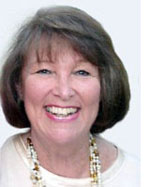 BURBANK, California -An unlikely group of strangers has made of themselves a tight-knit family. They are the residents of the Golden Days Retirement Hotel and they inhabit a charming, high-spirited musical by Mel Mandel and Norman Sachs called My Old Friends. BURBANK, California -An unlikely group of strangers has made of themselves a tight-knit family. They are the residents of the Golden Days Retirement Hotel and they inhabit a charming, high-spirited musical by Mel Mandel and Norman Sachs called My Old Friends.
An ambivalent paean to old age, My Old Friends is currently having its West Coast premiere at the Big Victory Theatre in Burbank. (Its original opening was in New York in 1979, where it had a brief run.) Filled with bright, melodious songs, clever lyrics, and sprightly but decorous dances, My Old Friends follows the sedate adventures, the subtle ups and downs, and the often tedious daily existence of eight senior citizens in this “retirement hotel for those that are well.”
In the opening number, “I’m Not Old”, the characters introduce themselves: the Jewish soap opera maven, Mrs. Polianoffsky (Annie Abbott); the jokester and self-styled Master of Ceremonies, Mickey Catlan (Marc Elliot); the cautious romantic, Sidney Fineberg (Dominick Morra); the peripatetic tie salesman, Wally Slocum (Malachi Throne); the dancing Latino, Arias (Ruben Rabasa); the militant activist, Mrs. Cooper (Pat Hodges); and the vivacious lady with a secret sorrow, Heloise Michaud (Betsy Randle).
Into this diverse group comes a handsome widower, Peter Schermann (Tom Ormeny), to shake up the rigid bureaucracy of Mrs. Stone (the offstage voice of Bobbi Stamm), who runs the hotel much as Nurse Ratched (from One Flew Over the Cuckoo’s Nest) might. Quickly smitten with Heloise, Peter and she perform a tentative, chaste, song and dance, “What We Need Around Here (is a little music…)”
A few minutes later, prodded into action by the new mood in the hotel, the cautious Fineberg leads the residents in an exuberant show-stopper, “I Bought a Bicycle.”
In another show-stopping number, Mrs. Polianoffsky and Cooper deride their age with “Before My Time.” And Cooper (Pat Hodges), known internationally as a top recording artist, belts out the life-affirming solo “A Little Starch Left.”
But it isn’t all song and dance. There is some consideration of the meaningful life, the value of work and accomplishment, illness and death. (As Catlan remarks ruefully, “Sometimes I think I should have followed my doctor’s advice and died.”) And even though the dreadful Mrs. Stone is replaced by the innovative Mr. Gettlinger (Herb Hall), who fills the hotel with activities, classes, and projects, the residents are, according to Peter, “just keeping busy, not really living.”
In the end, My Old Friends is light fare, but a delightful journey nevertheless. Expertly directed by Victory Theatre Center’s Artistic Director, Maria Gobetti, and musical director Scott Harlan, the company does justice to the book, lyrics and music of Mel Mandel and Norman Sachs. Cate Caplin has provided sweet and felicitous choreography, and Peter Wooley’s set design conveys the conventional, well-worn look of a retirement environment. Lighting by Carol Doehring and costumes by Lauren Tyler are most appropriate, especially in the Christmas party scene. And pianists Serge Bueso and Tom Griep provide such rambunctious accompaniment that a full orchestra would be superfluous.
My Old Friends will run Fridays and Saturdays at 8 p.m. and Saturdays and Sundays at 4 p.m. through August 10. The Victory Theatre Center is located at 3326 West Victory Boulevard in Burbank. Call (818) 841-5421 for tickets.

REFLECTIONS
A Jewish dancer’s road to freedom
By Sheila Orysiek
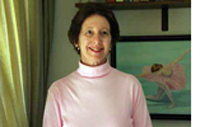 SAN DIEGO—On a recent sunny afternoon I was walking around downtown San Diego and happened by National Historic Building #1978000751 at 526 Market Street. Hearing a piano I peeked in the dusty windows of a pair of old wooden doors and saw a flight of stairs – nothing to the right or left – just a staircase going straight up. Stepping back toward the curb I looked up at the windows on the second floor and could faintly see people dancing – not ordinary people, nor ordinary dancing, but ballerinas in pointe shoes and premier danseurs doing triple tours en l’air (turns in the air) and grand jetés (big split jumps) – and then it faded – they were ghosts from long ago. SAN DIEGO—On a recent sunny afternoon I was walking around downtown San Diego and happened by National Historic Building #1978000751 at 526 Market Street. Hearing a piano I peeked in the dusty windows of a pair of old wooden doors and saw a flight of stairs – nothing to the right or left – just a staircase going straight up. Stepping back toward the curb I looked up at the windows on the second floor and could faintly see people dancing – not ordinary people, nor ordinary dancing, but ballerinas in pointe shoes and premier danseurs doing triple tours en l’air (turns in the air) and grand jetés (big split jumps) – and then it faded – they were ghosts from long ago.
I don’t know what might be up those stairs now, but I do know what was there in the 1970’s. It was the home of the original San Diego Ballet and those rooms were filled with music, dance, rushing dancers, resting dancers, happy and troubled dancers. And what dancers!
Our day began as it does for dancers all over the world – with morning class. No matter the stellar accomplishments on stage the previous night, every dancer starts the day with morning class; waking up the body, mind and spirit to the demands of being a dancer. Promptly at 9 a.m., we lined up along the barre clad in various tattered ensembles of collectible clothing, (after going through a personal regimen of stretches accompanied by the requisite groaning) the teacher entered, the opening chords played, and the day began with pliés.
I was not a member of the San Diego Ballet Company, but was privileged to take Company class every morning which demanded (and assumed) a professional level of technical proficiency. Thus, I got to see much of what was important in dance in San Diego in the 1970’s. And what a time it was!
Keith Martin, formerly with the Royal Ballet (London) was artistic director in addition to being principal dancer at San Diego Ballet. A roster of fine teachers represented the various schools/styles of which ballet is comprised: Balanchine, Loring, Vaganova, Stuart, Royal Ballet, and more. The dancers came from across the world as well as San Diego. Jillana, former principal with New York City Ballet, both taught and occasionally danced with the Company. Elaine Thomas, dancer and ballet mistress (Royal Ballet, London), Robert Rodham, former principal dancer, New York City Ballet, Prima Ballerina Sonia Arova with a legendary international reputation, along with several others, graced those morning classes.
The two high-ceilinged studios were old, somewhat musty, downtown dusty and wonderful examples of urban interiors from an earlier time. The floors of broad wooden planks gleamed with age and imperfections that time and use gives to wood; bore marks from rosin scuffed slippers and pointe shoes. The wooden barres, darkened with the sweat of hundreds of hands, hundreds of times, lined the walls.
French-paned windows looked out into Market Street and we could hear the motorized traffic below and look down at the colorful foot traffic that went by at all hours of the day and night. The sun slanted in through those tall windows, dust motes danced to gravity’s music and created splashes of patterned light on the floors which enshrined each dancer in his/her own particular sunlit framework.
But the dancers saw little of that – they were concentrated on the images reflected in the mirrors that lined the interior walls. Those mirrors – where are they now? – had captured images of dancers that were legends – visitors from around the globe – international stars by any standard; dancers whose names will be in the history books of dance for a hundred years.
Of the five greatest ballerinas of the 20th Century two of them had been seen in those mirrors: Prima Ballerina Assoluta Dame Margot Fonteyn (Royal Ballet) had come and blessed the studios after a cleanup and re-do of the décor and accoutrements. Prima Ballerina Assoluta Alicia Alonso, (Ballet Nacional de Cuba) had taken class and rehearsed Giselle which was considered her finest role in a legendary career. She performed Giselle and La Peri in San Diego in 1977 with her marvelous partner, Jorge Esquival. I was the only one allowed to watch her take a private class in those old studios…..however, that’s another story.
But one morning another international star was in class and didn’t initially catch my eye because I didn’t recognize him though I knew he would be there - until he started to move. He didn’t exude the youth that habitually rushed across that floor; his was a mature talent. However, even more one sensed a deep personal history which none of us shared. His was the only gray head lined up at the barre. His face was lined. His eyes held a deeper knowledge than the world of dance. He came from a darker place, had fought his way toward the light and was now trying to find his place in that light.
Valery Panov and his wife, Galina Panova, had been principal dancers of the Kirov-Mariinsky Ballet* of St. Petersburg. In the hierarchy of ballet companies and ballet dancers – they had been part of the uppermost reaches of ballet heaven. Yet, here they were lined up in our midst – doing pliés and tendus – but oh my – how we watched every move!
Valery Panov hadn’t wanted to leap to freedom in an airport as Premier Danseur Rudolph Nureyev had or defect while on tour in the West as Prima Ballerina Natalia Makarova had. As a Jew in the Soviet Union he was always closely watched. When he applied for an exit visa to immigrate to Israel he was immediately dismissed from the Kirov-Mariinsky Ballet. Galina, not being Jewish, was given the choice to remain but she chose to join her husband in what amounted to house arrest. Only it wasn’t a house, but a tiny pair of rooms, with no space for a dancer to practice. And there was no work available for them to do. For the next few years they relied on the generosity of friends for their every need – the food on their plates, the clothes on their bodies.
After several years Panov was able to bring his predicament to the attention of the international dance community and Jewish groups abroad. Film of his dancing was smuggled to the West and pressure was brought to bear to effect the Panovs’ release. Then, in the midst of a miscarriage with Galena hemorrhaging badly, Panov was informed that they could leave. Carrying his suffering wife in his arms, they boarded a plane and left. Panov wrote a most worthy book: To Dance in which he detailed their ordeal.
And here they were – dancing with us in an old building in San Diego. They had come as guest artists to star in Nutcracker. In the coda (final segment) of the ballerina’s variation (solo dance) of the Nutcracker Grand Pas de Deux, Galena performed thirty-two fouettés (whipping turns in place, on pointe), changing direction every fourth one. This is now becoming more commonplace, but she was the first one I’ve known to do it. When Valery performed as the Prince in Nutcracker” he danced it in a blond wig. He was considered one of Russia’s greatest virtuosos, an acclaimed dramatic dancer, as well as a choreographer of note.
Their first performance in the United States took place in 1975 at Wolf Trap Farm Park, introduced by Beverly Sills and televised. This was at a time when VCR’s were rare, but we had one and we taped it. Many years later – early 2000’s – I was contacted by the ballerina, Galina Panova, to endorse her application for American citizenship and for a copy of that wonderful performance as she did not have it. I was happy to comply. The Nutcracker Grand Pas de Deux which they performed that evening is the best performance I have ever seen of that very famous dance. After viewing it literally hundreds of times, I am still thrilled by it.
Pedestrians passing that old building on Market Street, probably have no idea of the special people who walked through those unimpressive rickety doors that lead up a flight of stairs - up to the dancing ghosts and echoes of splendors past. I always hear that piano when I walk by – and wipe away a tear of remembrance.
*The Mariinsky Ballet of St. Petersburg was known as the Kirov Ballet of Leningrad during the Soviet Union, but reverted to its original name after the demise of the USSR. However, when touring outside of Russia they usually employ both names for the sake of publicity and recognition and so are referred to as: The Kirov-Mariinsky Ballet.
Become a sponsor of the ‘Adventures’
Would you like to honor a friend's or relative's special simcha such as a birthday, wedding, anniversary, election or special award? Or would you like to memorialize a loved one? Now you can become a sponsor of one day’s edition of “Adventures in San Diego Jewish History” (see today's edition below) by sending a check for $18 to the Harrison Enterprises, publishers of San Diego Jewish World, P.O. Box 19363, San Diego, CA 92159.
Please indicate what date you would like to reserve, and the occasion that you wish to honor or memorialize, and be sure to include your phone number in case we have questions. In the event that more than one person seeks a particular date, we will run all such submissions at the same time. The editor encourages items of interest to the Jewish community, and reserves te right to reject any that might be deemed inappropriate.
These memorializations and honors will be archived along with the rest of "The Adventures in San Diego Jewish History," providing your family and friends with an internet searchable reference.
A separate opportunity to memorialize a loved one is through the Louis Rose Society for the Preservation of Jewish History, the archives of which are posted on this website as a service. For $36, each member of the Louis Rose Society is entitled to memorialize or honor one member of the San Diego Jewish Community. Additional honorees may be honored for $18 per person. Tax-deductible checks for the Louis Rose Society's program may be mailed to the Jewish Community Foundation/ Louis Rose Fund, 4950 Murphy Canyon Road, San Diego, CA 92123.
Please consider honoring someone by sponsoring a daily history edition and by joining the Louis Rose Society. If you have questions about either, please call Don Harrison, San Diego Jewish World editor, at (619) 265-0808, or contact him at editor@sandiegojewishworld.com.
|

ADVENTURES IN SAN DIEGO JEWISH HISTORY
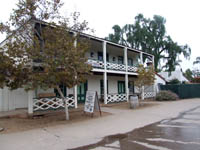
Robinson-Rose House
|
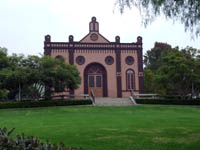
Old Temple Beth Israel |
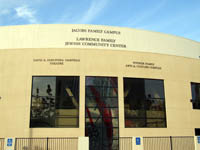
Lawrence Family JCC |
Editor's Note: We are reprinting news articles that appeared in back issues of various San Diego Jewish newspapers. You may access an index of the headlines of those articles by clicking here. You may also use the Google search program on our home page or on the headline index page to search for keywords or names.
Lasker Lodge B.B. {Hillel}
From Southwestern Jewish Press, April 24, 1947, page 5
Rabbi Judah Cohen, Western Regional Director of the Hillel Foundation of B’nai B’rith, is to be the featured speaker at Monday’s meeting, April 28th, at the Temple Center. Rabbi Cohen is conferring with Dr. A.P. Nasatir and a committee of Jewish Alumni and students at San Diego State College during the afternoon to discuss the feasibility of establishing a Hillel councillorship on campus. Should conditions warrant such a step, it would be a great boon to the Jewish students enrolled at State College.
Co-chairmen Jerry Freedman and Joe Martin announced splendid progress in their plans for the gala B’nai B’rith Party Nite. Don’t forget to reserve Sunday, May 11, for an evening of fun and entertainment. See any B.B. member for tickets and bring your friends to the Temple Center that nite for the time of your lives. Watch for further announcements.
Jewish Labor Com
From Southwestern Jewish Press, April 24, 1947, page 6
Sunday evening, May 4th, the Jewish Labor Committee will have a Card Party and Social at the Beth Jacob Center, 3206 Myrtle Street. This affair, the first one being given by them this spring, will have a dual purpose. It will bring together for a pleasant evening, members and friends of the Committee and at the same time help the local Jewish Labor Committee raise funds to meet their share of finances for the support of institutions in France and Belgium that have been opened for children and aged people, survivors of the recent holocaust in Europe.
Birdie Stodel B.B.
From Southwestern Jewish Press, April 24, 1947, page 6
You asked for it so it’s your baby now; but if you don’t treat it tenderly, it will be a thing of the past. What’s it all about? Night meetings. It’s a new innovation of the B’nai B’rith Women but your reaction is the important item—so make an appearance at meetings and encourage other members to come.
The ladies, in conjunction with the men’s lodge, plan to have speakers during the coming meetings, discussing various aspects of contemporary Jewish life. After a short meeting, refreshments are served by the men and women of B’nai B’rith and then a social hour follows.
For those of you women who wash on Monday or have to sweep out week-end company, these nite meeting are a wonderful solution. The next meeting will be held at Temple Center, 3rd and Laurel Streets, Monday evening, April 28th, at 8 p.m. Plan to be there and bring a guest.
Variety Show Saturday Nite
From Southwestern Jewish Press, April 24, 1947, page 7:
San Diego will be treated to a grand “variety show” this Saturday evening, April 26th at Temple Center, when the Youth Division of the United Jewish Fund puts on their United Jewish Youth Rally. Chairman for the evening, Eve Garber, announces that all youth organizations of the city will be represented with some of their best talent.
Taking part in the ten acts will be Jack Gross, Myron Shelley, Larry Solomon, Jerrry Wolper, Ben Siegel, Mickey Avrick, Rose Shale, Les Himmel, Roy Fagelson, Gene Janoff, Jerry Platt, David Krinitsky, Sally stein and Audrey Dombroff. These young people will perform as instrumental soloists, vocalists, dance teams, dance soloists, ad some will present dramatic skits.
This is the first time that the combined youth of San Diego have collaborated in a production of this kind and the committee promises a grand time for all San Diego youth and grown ups too.
{Return to top}


SAN DIEGO JEWISH WORLD THE WEEK IN REVIEW
)Middle East
Murtha owes Marines an apology by Shoshana Bryen in Washington, D.C.
Judaism
Conservative movement insists kosher processors treat employees humanely by Rabbi Leonard Rosenthal in San Diego
The importance of a Hebrew name by Rabbi Baruch Lederman in San Diego
San Diego
Garden and square memorialize two favorite professors at San Diego City College by Donald H. Harrison in San Diego
Adventures in San Diego Jewish History
—April 24, 1947: 'And A Little Child Shall Lead Them'
—April 24, 1947: Beth Jacob Congregation
—April 24, 1947: S.O.S. Still Needs Your Support
—April 24, 1947: S.D. To Have Summer Camps
The Arts
S.D. weighs festival of new Jewish plays by Carol Davis in San Diego
Middle East
Costs, benefits to Hamas regularization by Eran Lerman in Jerusalem
Wars among the Jews heat up in Israel by Ira Sharkansky in Jerusalem
U.S. and Israel prefer stability among Arab nations rather than real democracy by Shoshana Bryen in Washington, D.C.
San Diego
UJF backs programs to transport local seniors, build school in Sha'ar Hanegev by Donald H. Harrison in San Diego
Jackie Gmach receives Marla Bennett Humanitarian Award from AFMDA by Yvonne Greenberg and Paul Greenberg in La Jolla, California
Adventures in San Diego Jewish History
—April 10, 1947: Organizations 'working with' UJF
—April 10, 1947: USO-JWB Activities
—April 24, 1947: San Diego Sends $50,000 From Emergency Fund To Aid European Jews
The Arts
Chapter Thirteen of Reluctant Martyr, a serialized novel by Sheila Orysiek of San Diego
)Middle East
Skepticism over Israel-Hamas ceasefire by Ira Sharkansky in Jerusalem
Canada
Jews and Canada's First Nations have much to learn from each other's experiences by Rabbi Dow Marmur in Toronto
Adventures in San Diego Jewish History
—April 10, 1947: Prof. Sheldon Warns of Bundist revival
—April 10, 1947: We Were There by Albert Hutler
—April 10, 1947: Eminent Speakers to Appear in San Diego This Week
The Arts
Thursdays with the music of Hal Wingard
—#14 The Dog, The Cat And Me
—#153 Have You Hugged Your Cat Lately?
—#278 Boasting
Lifestyles
Have you ever tried making 'old' friends? by Donald H. Harrison in San Diego
Middle East
Hamas will rebuild during the ceasefire by Shoshana Bryen in Washington D.C.
San Diego County
Russert's death prompts walking regimen by Donald H. Harrison in El Cajon, California
San Diego Jewish Trivia: Journalists by Evelyn Kooperman
Adventures in San Diego Jewish History
—March 20, 1947: UJF Youth Division Organizes
—March 20, 1947: Sergeant Inspires Youth Division
—March 20, 1947:‘Personality’ Talk Impresses TYL
Arts
—L'il Noodle, a kid who'll steal your heart by Cynthia Citron in Los Angeles
United States of America
Jews are Obama’s base, not his problem by J. Zel Lurie in Delray Beach, Florida
San Diego
Orthodoxy and sports juxtaposed at gala by Donald H. Harrison in San Diego
Obituary: Isadore Horne, Holocaust survivor, 92 by Donald H. Harrison in San Diego
The Arts
The Jewish history of the Incredible Hulk by Rabbi Simcha Weinstein in New York
Adventures in San Diego Jewish History
—March 20, 1947: Pioneer Women
—March 20, 1947:Appeal for Seder Home Hospitality for Servicemen
—March 20, 1947:B’nai B’rith Presents Wheel Chairs to Hospital
—March 20, 1947:Carl Esenoff to Head Jewish Welfare Society
|
|
